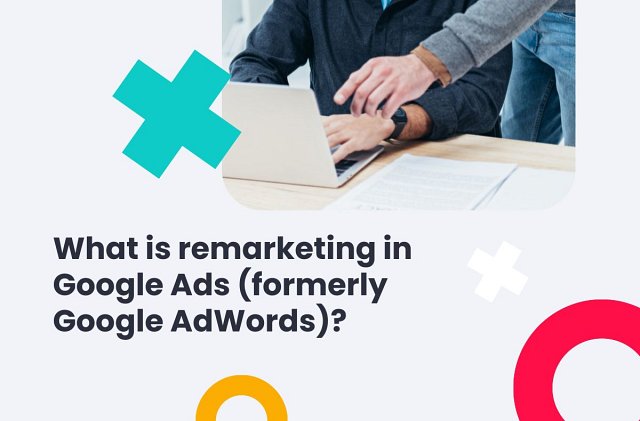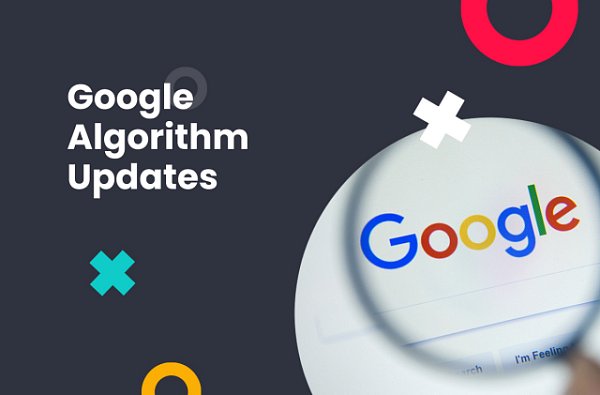(10 min. read)

Table of Contents
- How does Google Ads work?
- What is a Google Ads campaign?
- How do I launch a Google Ads campaign?
- Google Ads remarketing – how does it work?
- How to create a remarketing campaign in Google Ads?
- Google Ads dynamic remarketing – a specific type of remarketing
- Who is remarketing for?
- Conclusion
How does Google Ads work?
Google Ads (formerly Google AdWords) is an online advertising system for creating ads featuring products and services. In Google Ads, the advertiser decides where the ad will appear and how much they are able to pay for it, and they can change the settings during the campaign.
What is a Google Ads campaign?
Creating a campaign is the first step leading to advertising. A campaign is understood to be a set of ad groups with the same preferences, e.g. a common budget. You can have more than one active campaign in your Google Ads account. However, one campaign must contain at least one ad group with at least one ad in it.
You can start creating campaigns by matching the advertising goal (the use of prompts is not a must) such as:
- sales – online, in-app, via phone or in-store,
- potential customers – contact acquisition or user actions,
- website traffic – visits to the site by relevant people,
- consideration of buying a product of a particular brand - encourages to get acquainted with the offer,
- brand awareness and reach – reaching a wide audience,
- app promotion – increasing app downloads and user engagement,
- visits to the local physical store and special offers.
How do I launch a Google Ads campaign?
Go to Campaigns in the side panel of the Google Ads account and create a new one. The first stage is to set up the campaign (campaign settings). Start by selecting the goal and then the campaign type – depending on the goal, you will get different options for selecting the campaign type (the types of the Sales goal below).

The next step is to adjust the method that will bring us closer to achieving the goal, e.g., after selecting the Sales goal and pointing to the Search Network, the methods will be: site visits, phone calls, store visits, app downloads.

Then move on to the General Campaign Settings where you can name the campaign, choose a network (e.g., search network) and other settings, i.e., campaign start and end dates, URL options and dynamic search ad settings.

When you go to the Audience targeting option, you decide on the location, language and audience.


The next step is to choose a budget, i.e., the daily amount you want to spend on advertising, and a strategy for setting rates, such as CPC set by yourself or a target CPA.

You can also set a schedule for the ads to appear – selected times and days of the week, and ad extensions to achieve higher click-through rates.
The second step is to configure the ad group. This step differs depending on the type of campaign you have selected.
The third step is the creation of the ad format, which is also determined by the type of campaign selected at the beginning. Below is a preview of creating an advertisement in the search network.

Done! Once you've created your campaign, you'll see a summary, including the number of ad groups, ads, and data such as your rate strategy and campaign budget.
Google Ads remarketing – how does it work?
What is Google Ads remarketing? It is a function that allows you to prepare campaigns targeted at people whose activity indicates they already know the company and its offer.
Google Ads remarketing enables you to target advertising to users who have already interacted with this type of feed, website or app. After the user leaves the page or stops using the application, the ad is displayed to him when he browses other pages in the ad network or use the Google search engine. In this way, Google remarketing prolongs the purchase path, as it enables the ad recipient to quickly return to the place they left.
In addition to standard remarketing, within the Google Ads campaign there are also:
- Dynamic remarketing – users will see an ad with the product or service they viewed after leaving the site or using pages or apps in the ad network.
- Remarketing Lists for Search Ads (RLSA) – the ad reaches people who have been on the site and left it, but are still using the Google search engine.
- Video Remarketing – the ad targets users who have watched the video or interacted with the video or channel and are still on YouTube or are using the ad network.
- Customer List Remarketing – the message is generated on the basis of a list with the data of customers who, while logged into Google, see the advertisement when using different services.
Using dynamic remarketing (but also standard remarketing) is possible once you have set up an audience data source for your site or app. This can be done by adding a Google Ads tag to the site. The code snippet transmits data to Google Ads about users and their behaviour, e.g., looking at the product, placing it in a shopping cart. The global site tag allows you to add site users to remarketing lists.
An example of a remarketing list created by default is, for instance, the All users list. It contains user data and is obtained with the use of conversion tracking tag. In the Google Ads panel, you can also find lists for online shops which collect information about users browsing the product page or abandoning the shopping cart. In addition to these automatically generated lists, you can, and actually should, use lists created by yourself.
How to create a remarketing campaign in Google Ads?
Once our remarketing lists have accumulated enough users, we can target ads to them. A remarketing campaign is created in almost the same way as a regular campaign. The difference is that you need to set up ad targeting to a specific audience. How to do it? It may be done at the stage of creating a new campaign or after its creation.
In the first case, at the stage of creating an ad group, we look for the section: People: who do you want to reach, open Audiences, then click BROWSE, How they have interacted with your business, Website visitors, and finally select the list that interests you. You can add any number of lists to the ad group.

To add a remarketing list to the campaign you have already created, go to the Tools section, then in the Shared library section, select Audience manager. Then, select the audience list you want to add and click above the audience list Add to... and Ad groups. Now select a campaign and add the audience list to the ad group. After clicking Next, set audience targeting in the ad groups and Add audiences.


It’s worth mentioning capping, i.e., setting a cap of ad impressions per user. If you don't set capping, one ad can follow a potential customer so often that it has the opposite effect to the one intended. To set this option, go to your remarketing campaign settings and open the Manage frequency option. Then select Set preferences, where you specify how often you want your ads to be displayed. Once you have entered your settings, save them.

When running a remarketing campaign, it's also worth thinking about excluding people who have already made a conversion. This is good practice in industries where it can be assumed that one user will not make the same conversion twice. To do this, you need to have a list of users who have made a conversion created and then exclude them from the campaign in the Exclusions tab.
Google Ads dynamic remarketing – a specific type of remarketing
The user visits the website, browses it, selects products, reads descriptions, maybe even adds products to the shopping cart, and then... leaves the website, but still remains online. Perhaps he wanted to purchase something but got distracted or decided that he needed more time to think about this decision. There could be many reasons.
We can keep the user's attention on the same products. This is of course done through Google Ads dynamic remarketing. While the user is browsing other pages, the same products that he already had in his basket or looked at, follow him. That's why this message is so effective – because it makes the potential customer reconsider buying the same products.
Dynamic remarketing is designed for campaigns in the ad network and for promoting apps. Within the ad network, use the Sales goal and select Standard ad network campaign, then enter the campaign name, strategy for setting rates/

Responsive display ads adapt in appearance, format and size to the available advertising space. The system automatically creates the advert based on the data you have entered. Information on the product file can also be used, such as the product name, price or image.
Importantly, don't forget to set up targeting for users of your website who are on remarketing lists. The instructions are outlined in the previous chapter.
Who is remarketing for?
Google Ads remarketing allows you to reach users of your website or app, and the goal may be to make a sale or build recognition. The ad appears at a time when the user is likely to respond to the offer and importantly, it is the ad that accurately reflects previous activity. Other advantages of using remarketing include automatic rate setting, reach, i.e., targeting the entire Google ad network and access to the Ad gallery.
Using remarketing will be profitable for anyone who runs a website and is a seller. So, it will work well for e-commerce, when selling training, in the hotel industry, real estate industry or businesses promoting local offers. Businesses that don't have customers yet can benefit from dynamic new customer acquisition. This option is also useful when you want to target audience lists unrelated to your customer feed. Google Ads uses demographic data to match intentions of users to products in the feed.
Google Ads dynamic remarketing focuses on people who know the company and its services. The goal is for the user to finish what he started, so the ads are matched to specific products. It is Google that selects from a data feed of products and services those that will match a specific user.
Within a campaign you use a budget which is the amount that you are able to spend on advertising. The budget can be: daily or shared (an amount for several campaigns with the same objective). The strategy for setting rates by the Google Ads system is matched to the campaign and advertising objective. The rate is influenced not only by the campaign type, but also by other factors such as the target group, competition on the market or seasonality. It is worth testing various rate adjustment strategies to find the one that brings the best results for a particular campaign.
Conclusion
With remarketing you will not only be able to turn the customer back on the purchase path but also generate interest in other products. Formerly Adwords, Google Ads connects the time, product and customer. An ad for a specific product shows up to the right person at the right time, increasing the chance of getting a conversion.

Online Advertising Specialist of Ideo Force





